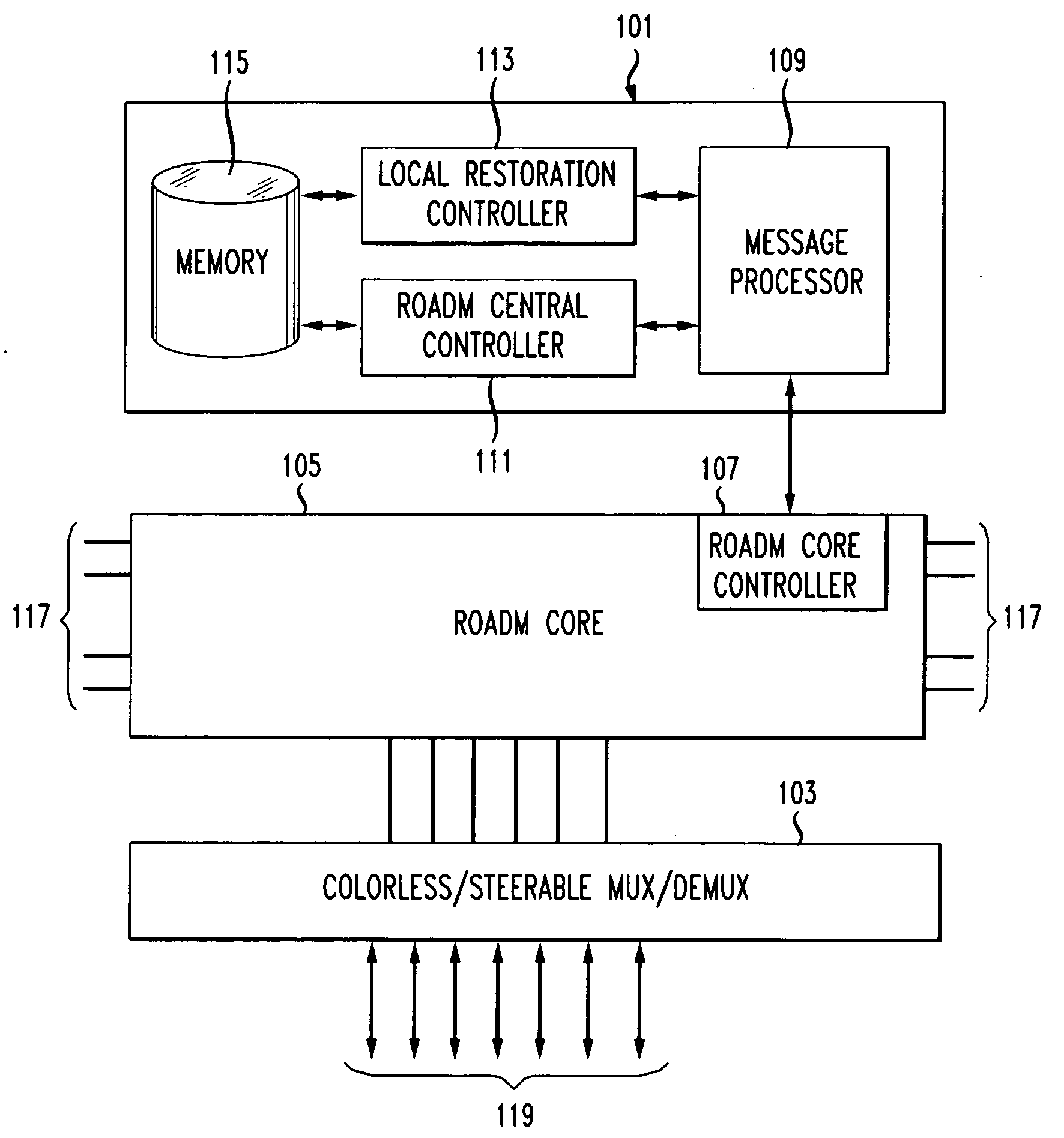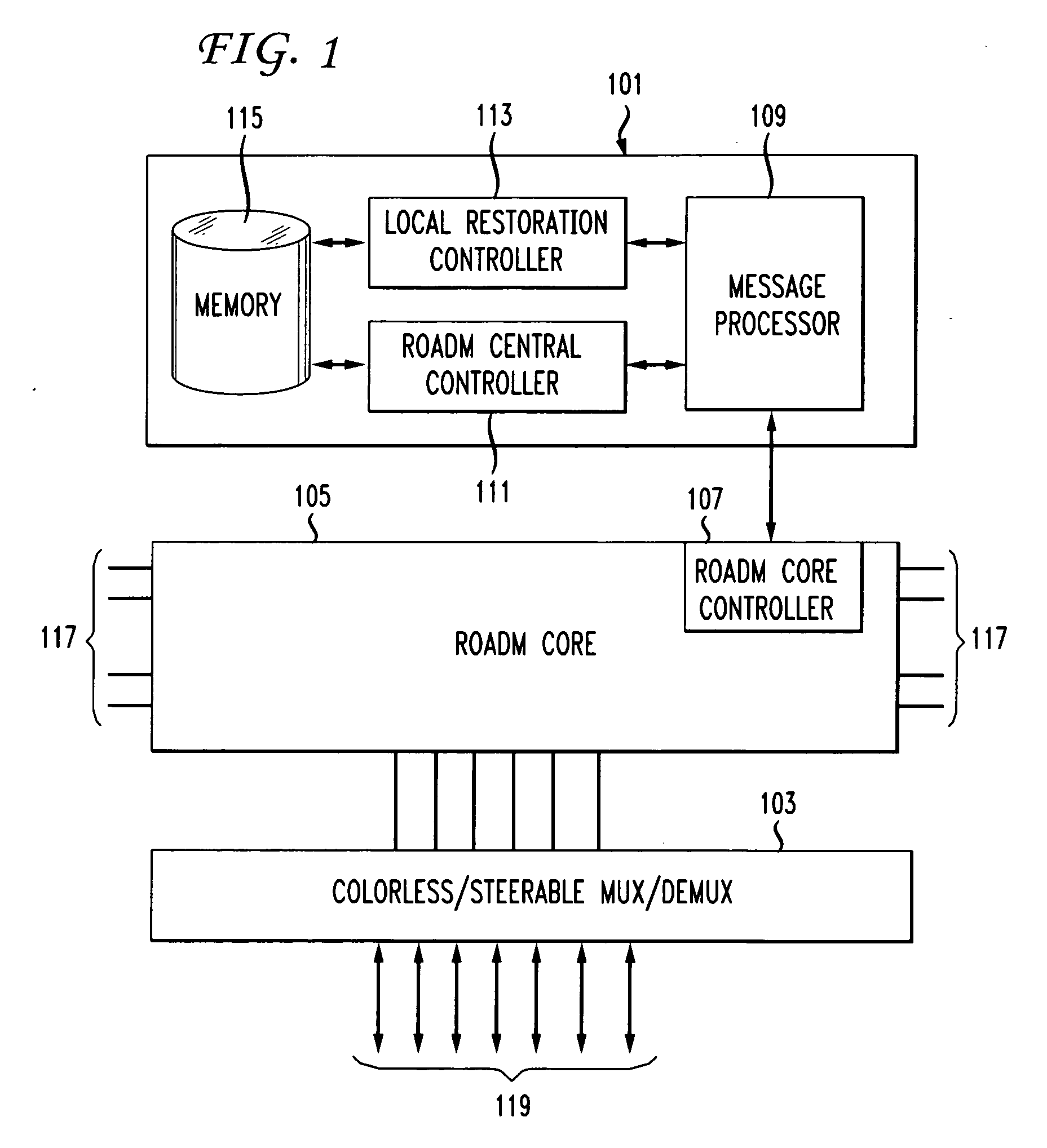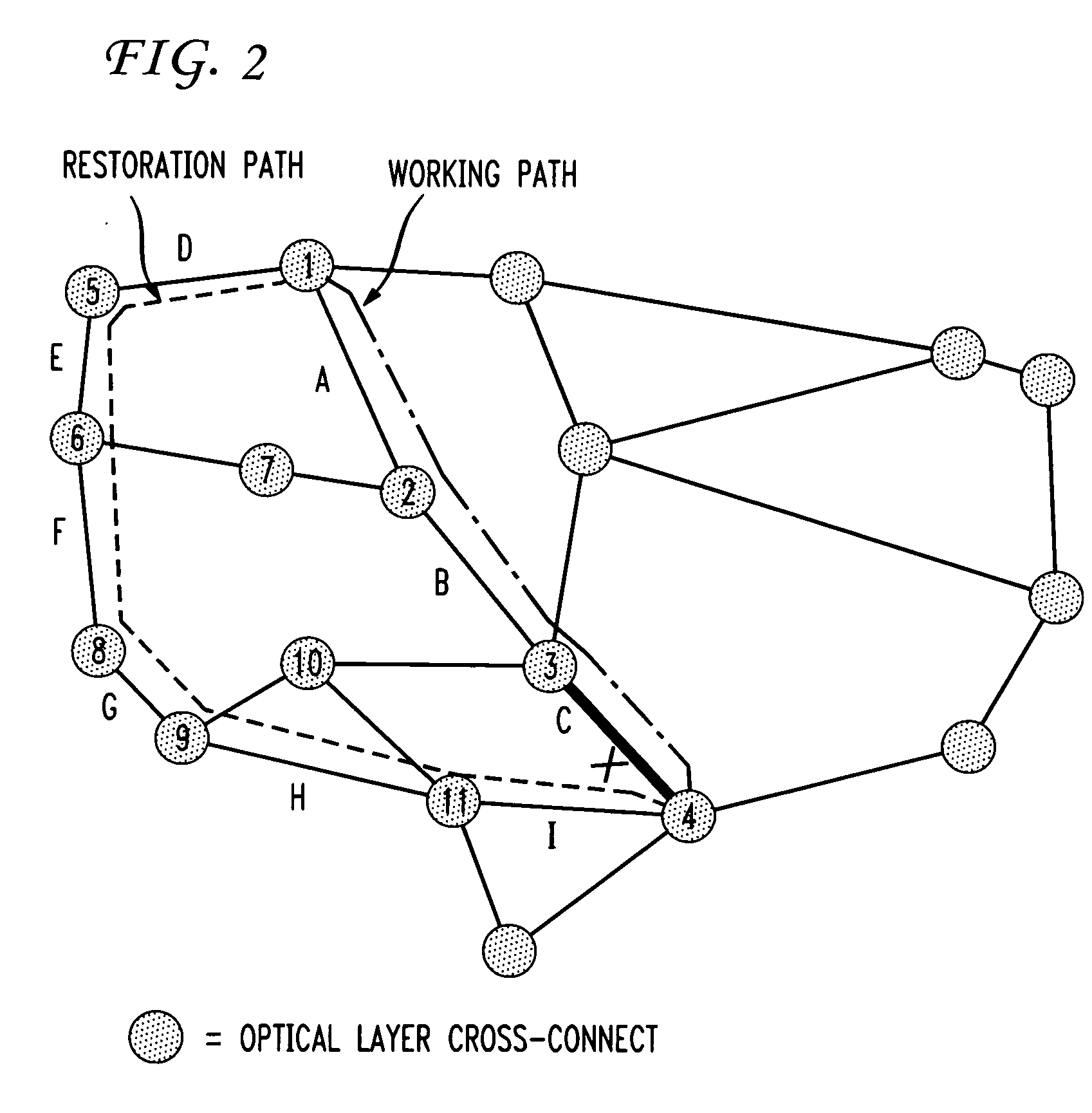Standby restoration signaling for optical networks
- Summary
- Abstract
- Description
- Claims
- Application Information
AI Technical Summary
Benefits of technology
Problems solved by technology
Method used
Image
Examples
first embodiment
[0054]The first embodiment is one-ended restoration path signaling (step 3009). This embodiment chooses either the ingress or egress end OXC 101 (OXC 1 or OXC 4) of a service path as a control OXC 101. For example, OXC 1 is the control OXC in FIG. 2. If the service path experiences a fiber cut or an inter-OXC failure, the control OXC, OXC 1, will detect the failure via a loss of light or a loss of frame. If the failure is a one-way failure from OXC 1 to OXC 4, only the receiving end OXC, OXC 4, of the failure can detect the failure. If the receiving end OXC is the control OXC, it will initiate the restoration method, otherwise, a Far End Receive Failure (FERF) alarm or other mechanism where the end OXC that detects the “receive” signal failure issues an alarm to the path other end OXC over Synchronous Optical Network (SONET) overhead or other protocol of the constituent connection signal to trigger restoration. If OXC 4 is not the control OXC, OXC 4 would send a FERF alarm to OXC 1,...
second embodiment
[0071]The second embodiment is two-ended restoration path signaling. In two-ended signaling, both an ingress OXC and an egress OXC initiate restoration independently upon detection of a signal failure alarm. Two restoration messages are initiated and forwarded towards each other and intersect between, or at either the ingress or egress OXC.
[0072]Two-ended signaling may complete restoration faster than one-ended signaling, but extra processing protocol is required over that required for one-ended signaling. The added protocol resolves contention in wavelength channel selection for the OXC where the two restoration processes intersect.
[0073]For two-ended signaling, when link C fails, both OXC1 and OXC 4 detect a loss of light or a loss of frame, and initiate the restoration method on the restoration path. When the two restoration messages meet at some location on the restoration path, wavelength channel contention is resolved between the two ends of the restoration standby.
[0074]To re...
PUM
 Login to View More
Login to View More Abstract
Description
Claims
Application Information
 Login to View More
Login to View More - R&D
- Intellectual Property
- Life Sciences
- Materials
- Tech Scout
- Unparalleled Data Quality
- Higher Quality Content
- 60% Fewer Hallucinations
Browse by: Latest US Patents, China's latest patents, Technical Efficacy Thesaurus, Application Domain, Technology Topic, Popular Technical Reports.
© 2025 PatSnap. All rights reserved.Legal|Privacy policy|Modern Slavery Act Transparency Statement|Sitemap|About US| Contact US: help@patsnap.com



